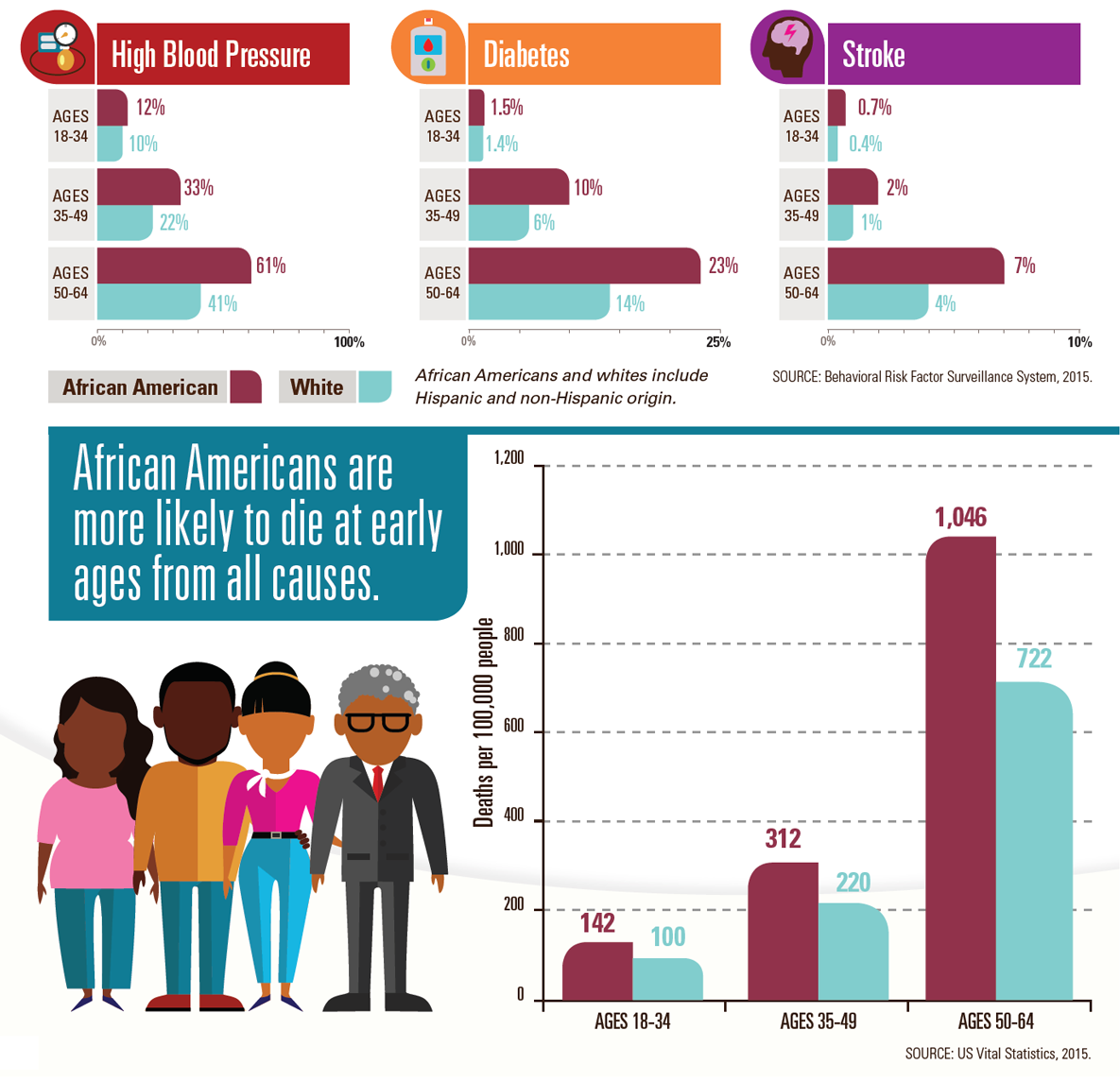Health and Wealth in the United States
Individual Considerations
of health and outcomes (Brown et al., 2019). Social determinants of health are factors outside
of medical care that influence well-being (Braveman, 2022). Examples include housing,
transportation, air quality, food security, discrimination, education, and economic stability.
*Contrast between poor and wealthy neighborhoods* 
👮 💣 💊💉🍔🍕🍺 💲💰👠🍏🍋🌸💎
Less likely to succeed ❌ More likely to succeed ✅
Racism as a Social Determinant of Health


Improving Cultural Bias as a Society
Together, we can practice cultural competence and cultural humility to make us more aware (Braveman, 2022). The goal is to be aware of our unconscious bias and not behave in a potentially detrimental manner towards certain ethnic groups (Braveman, 2022).
CDC: Centers for Disease Control and Prevention
The Centers for Disease Control and Prevention (CDC) is committed towards addressing health disparities through the development of the 2021 CORE Health Equity Strategy (Centers for Disease Control and Prevention, 2024). The CDC is applying an integrated and comprehensive approach in eliminating health disparities. Diversity, equity, inclusion, accessibility, and belonging are foundational elements in their work and strategy (Centers for Disease Control and Prevention, 2024).
CORE Elements
C: Cultivate comprehensive health equity science
O: Optimize interventions
R: Reinforce and expand robust partnerships
E: Enhance capacity and workplace diversity, inclusion, and engagement
(Centers for Disease Control and Prevention, 2024).

What can WE do as Healthcare Professionals?
*In healthcare, it is necessary to increase interdisciplinary research by blending disciplines, expertise, and methodology (Jones, 2019). We need to understand fundamental causes of disparities and how these influence outcomes within populations, over the course of the lifespan, and trans-generationally (Jones, 2019).
*The development of courses, conferences, and programs can enhance community-based research and health perspectives on a national or global level (Jones, 2019).
*The incorporation of population specific models provides structural pathways in addressing lived experiences and exposures (Jones, 2019). Such models will also determine if agencies have the ability to respond appropriately to exposures (Jones, 2019).
*The use of the electronic health record increases demographic and geographic variables to help examine population health (Jones, 2019). This will allow us to understand specific needs in healthcare.
*It is important to use evidence-based research and prioritize patient-centered care. We can also advocate for state and governmental funding support. Lastly, we can volunteer our time by offering free clinics, screenings, vaccinations, or surveys.
YouTube: National Institute on Minority Health
Women in the Business
Patient Testimonials
"I highly recommend everyone to visit Kristen with any of their concerns! She got me in very quickly, answered all of my questions sincerely, and made everything go effortlessly at my first visit with her!" -Anonymous
"Today was my first appointment with Kristen and she was absolutely amazing! I have never felt so understood during a doctors visit and she listened to me so intently about what I was there for. She made me feel so incredibly comfortable during all parts of the visit and is overall so great. I'm so thankful she was recommended to me!" -Anonymous
"Kristen is easy to talk to. She’s extremely knowledgeable, kind and very welcoming. I am very happy that she will be caring for me." -Anonymous Book now! https://anchoredwomenshealth.com/
See you all in my next blog! Thank you for reading. I look forward to your comments!
-Cassidy Cox RN
References
Anchored Women's Health. (2024). Anchored women's health. https://anchoredwomenshealth.com/
Braveman, P. (2022). The social determinants of health. Maxcy-Rosenau-Last Public Health & Preventive Medicine,16e. https://accessmedicine.mhmedical.com/content.aspx?bookid=3078§ionid=256339268
Brown, A. F., Ma, G. X., Miranda, J., Eng, E., Castille, D., Brockie, T., Jones, P., Airhihenbuwa, C. O., Farhat, T., Zhu, L., & Trinh-Shevrin, C. (2019). Structural interventions to reduce and eliminate health disparities. American Journal of Public Health, 109(S1). https://doi.org/10.2105/ajph.2018.304844
Centers for Disease Control and Prevention. (2024). Racism and health. https://www.cdc.gov/minority-health/racism-health/index.html
Google Images
Jones, N. L., Gilman, S. E., Cheng, T. L., Drury, S. S., Hill, C. V., & Geronimus, A. T. (2019). Life course approaches to the causes of health disparities. American Journal of Public Health, 109(S1). https://doi.org/10.2105/ajph.2018.304738
YouTube